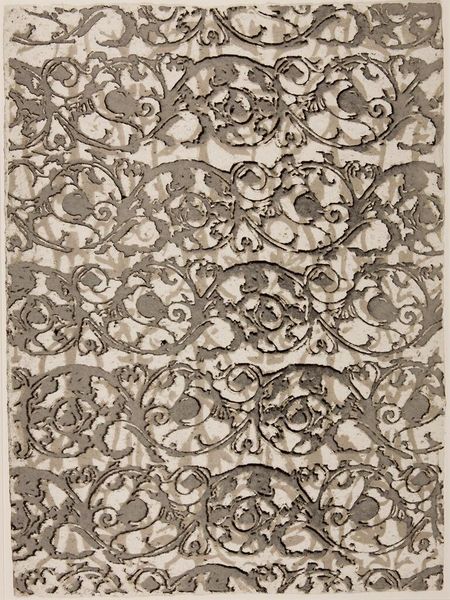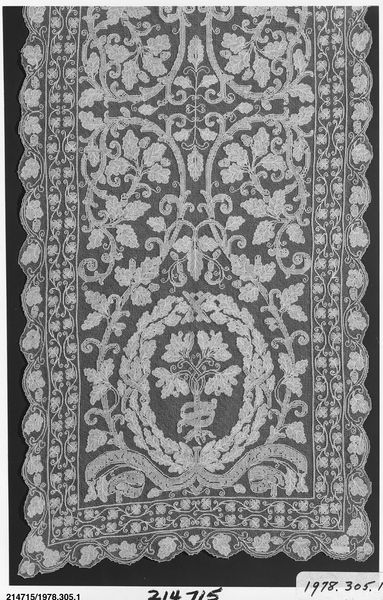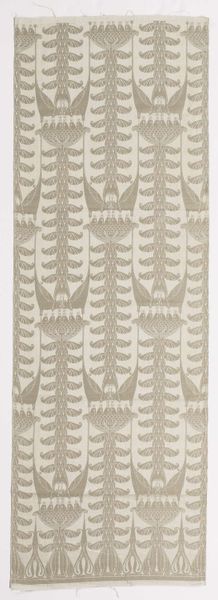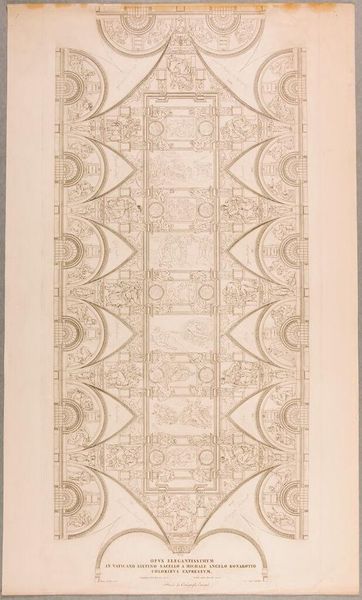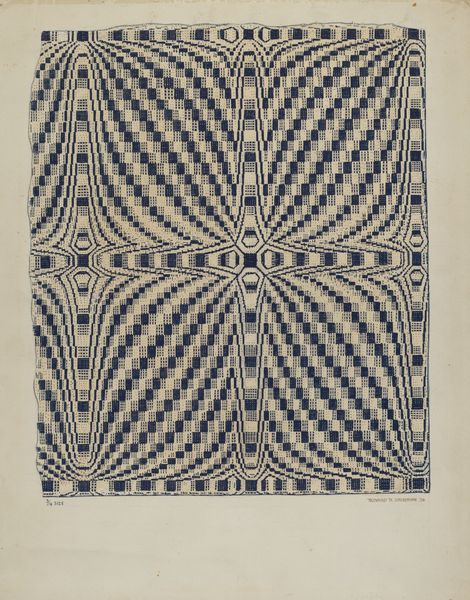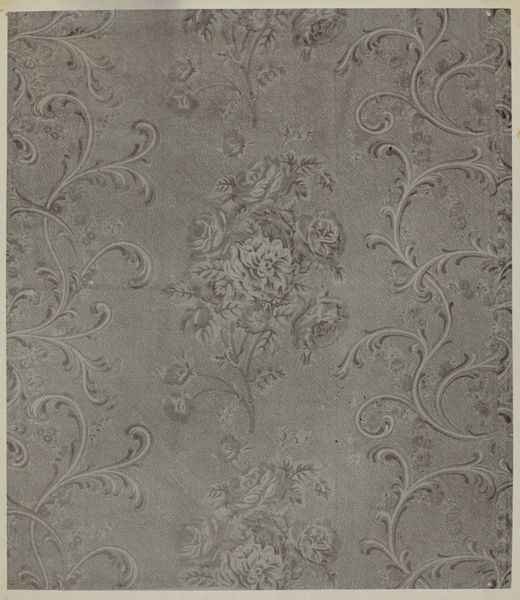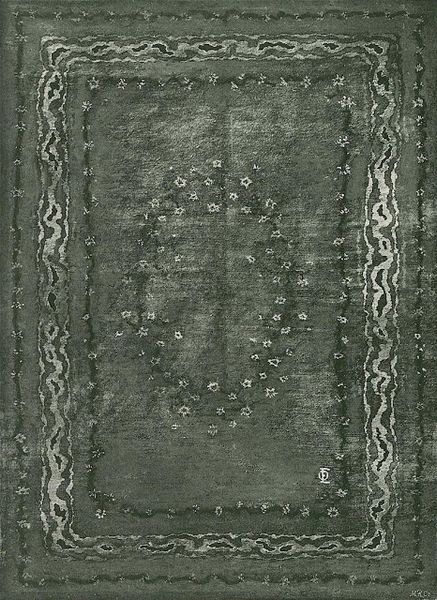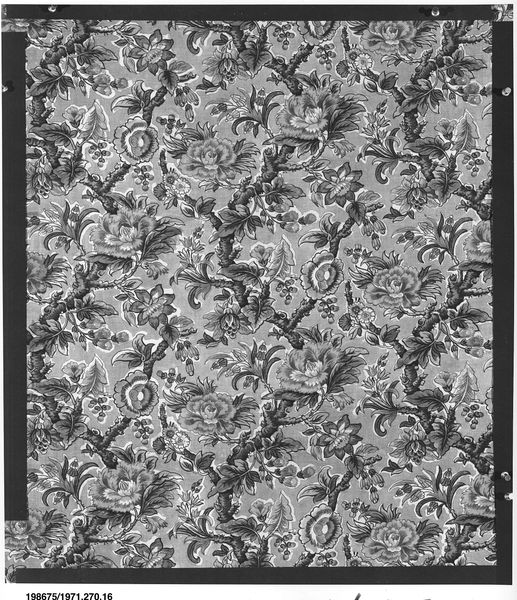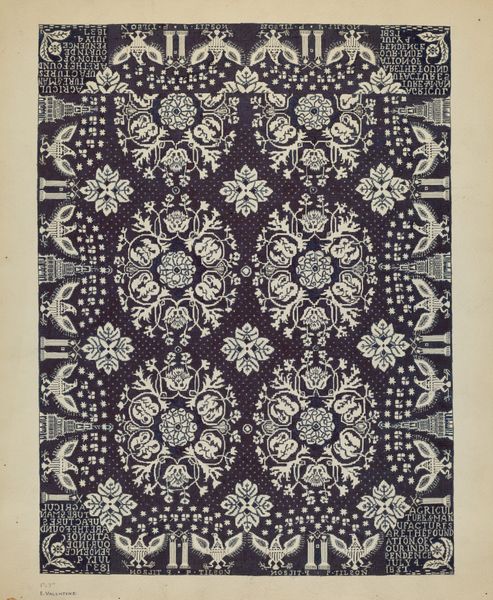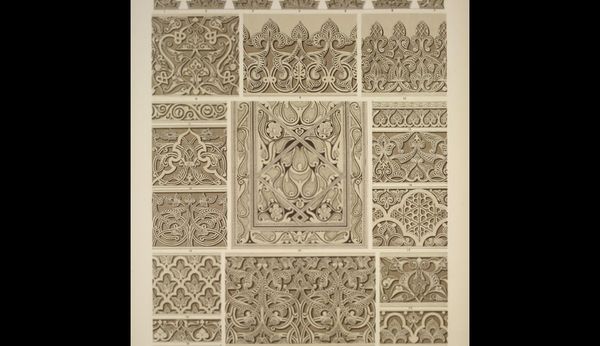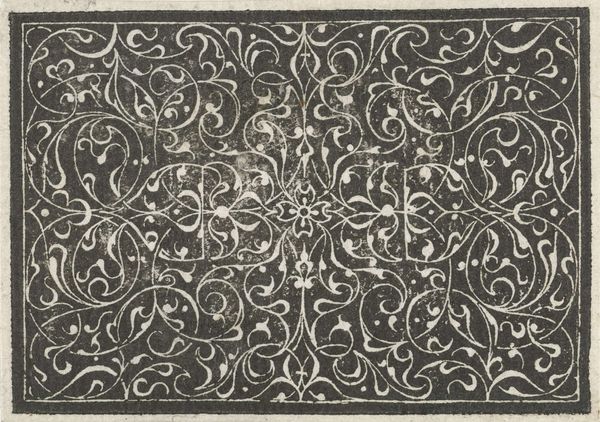
drawing, graphic-art, textile, woodcut
#
drawing
#
graphic-art
#
organic
#
art-nouveau
#
pattern
#
textile
#
linocut print
#
organic pattern
#
woodcut
Copyright: Public domain
Curator: Looking at this “Tiger Carpet Design” created around 1899 by Otto Eckmann, what impressions rise to the surface? Editor: You know, at first glance, I get this sense of quietude, like stepping into a misty morning. The soft grays and whites blend, creating this sort of hushed, contemplative space. Makes you wanna curl your toes, but carefully! It’s pretty. Curator: The piece's subdued palette certainly establishes a mood. But the name itself suggests an intersectional narrative linked to colonialism and the appropriation of symbols of power and the "exotic." This piece appears to exist as graphic art on paper, employing methods of woodcut and linocut printing. How does it position itself relative to global systems of trade, cultural exchange, and labor? Editor: Oh, that’s intense! I was thinking about my grandmother's hallway. I mean, sure, a tiger is fierce, right? King of the jungle, roar! But here? It’s all swirling lines and delicate details, almost floral. The tiger is translated through Art Nouveau in Europe. You can feel its movement trying to break out from the traditional format. Does it still contain potency or only traces? Curator: Eckmann, aligning with Art Nouveau’s aesthetic tenets, sought to integrate organic forms into industrial design, aiming to democratize art. However, the commodification and stylization of such motifs must be addressed. Given the historical context, does the abstraction of the "tiger" serve as a celebration of nature, or as a diluted symbol of power? Who is empowered through it's commercial production and reproduction? Editor: See, that’s the tricky part! Maybe it’s both? The intention was there – beauty for the masses! But yeah, who gets the actual beauty, the original spark of the tiger? Maybe the artist and the art collector get it! You raise a great question. Perhaps the dilution itself reflects our conflicted relationship with nature and power. Curator: Precisely! Ultimately, "Tiger Carpet Design," while beautiful, compels us to critically consider the era's underlying social and political dynamics, alongside art's complicated function in upholding or questioning established standards. Editor: Well said. So, beyond my grandmother’s hallway, I will try to bear in mind how it felt when this piece was conceived: the mix of raw creative impulse, the promise of accessibility, and those underlying historical complexities you spoke of, influencing its beauty.
Comments
No comments
Be the first to comment and join the conversation on the ultimate creative platform.
